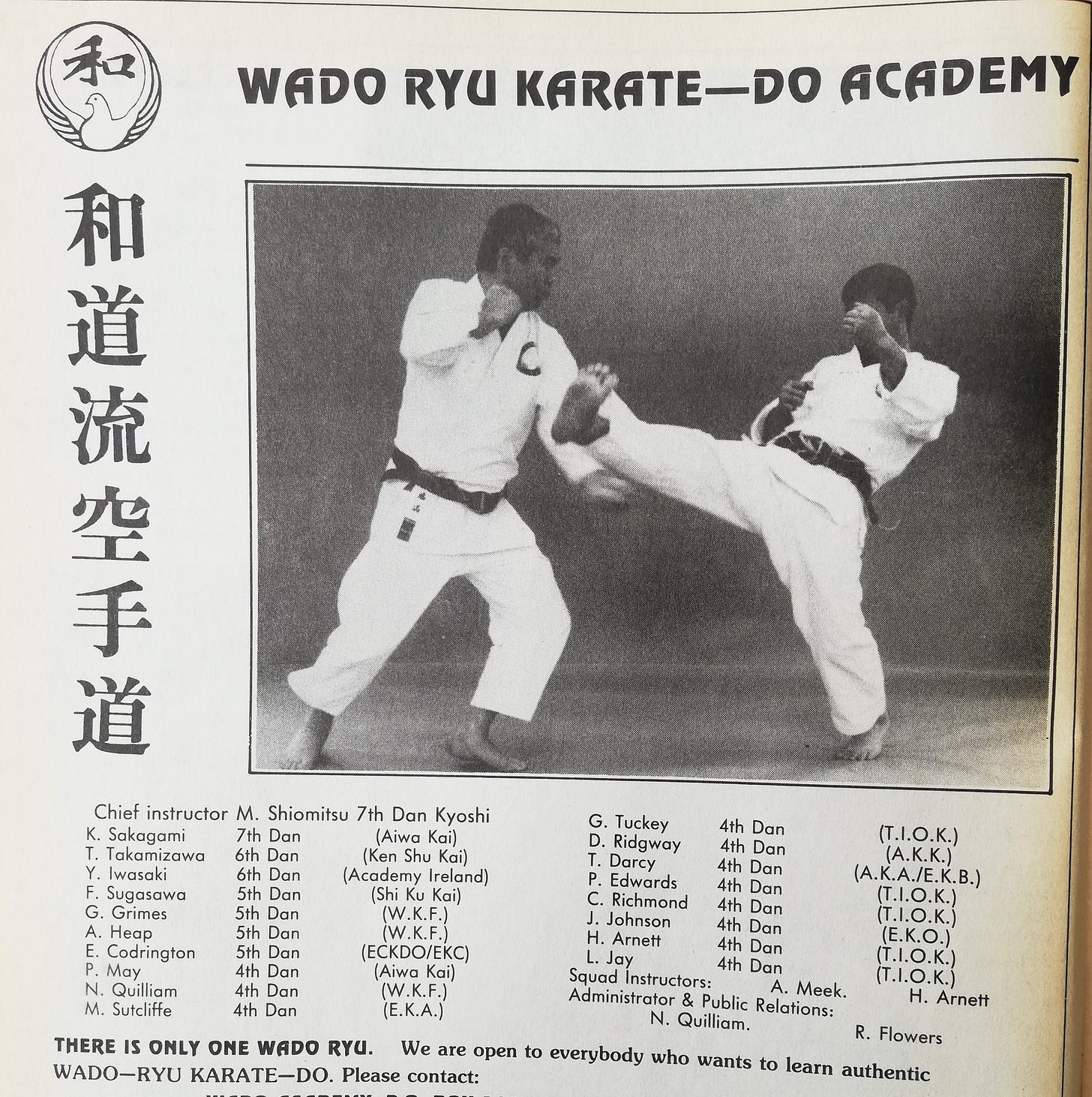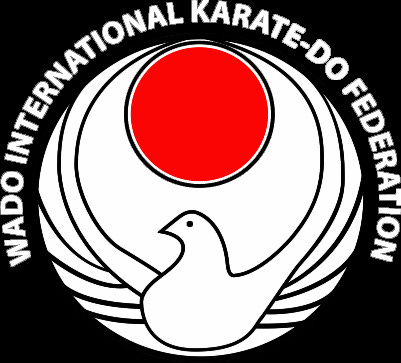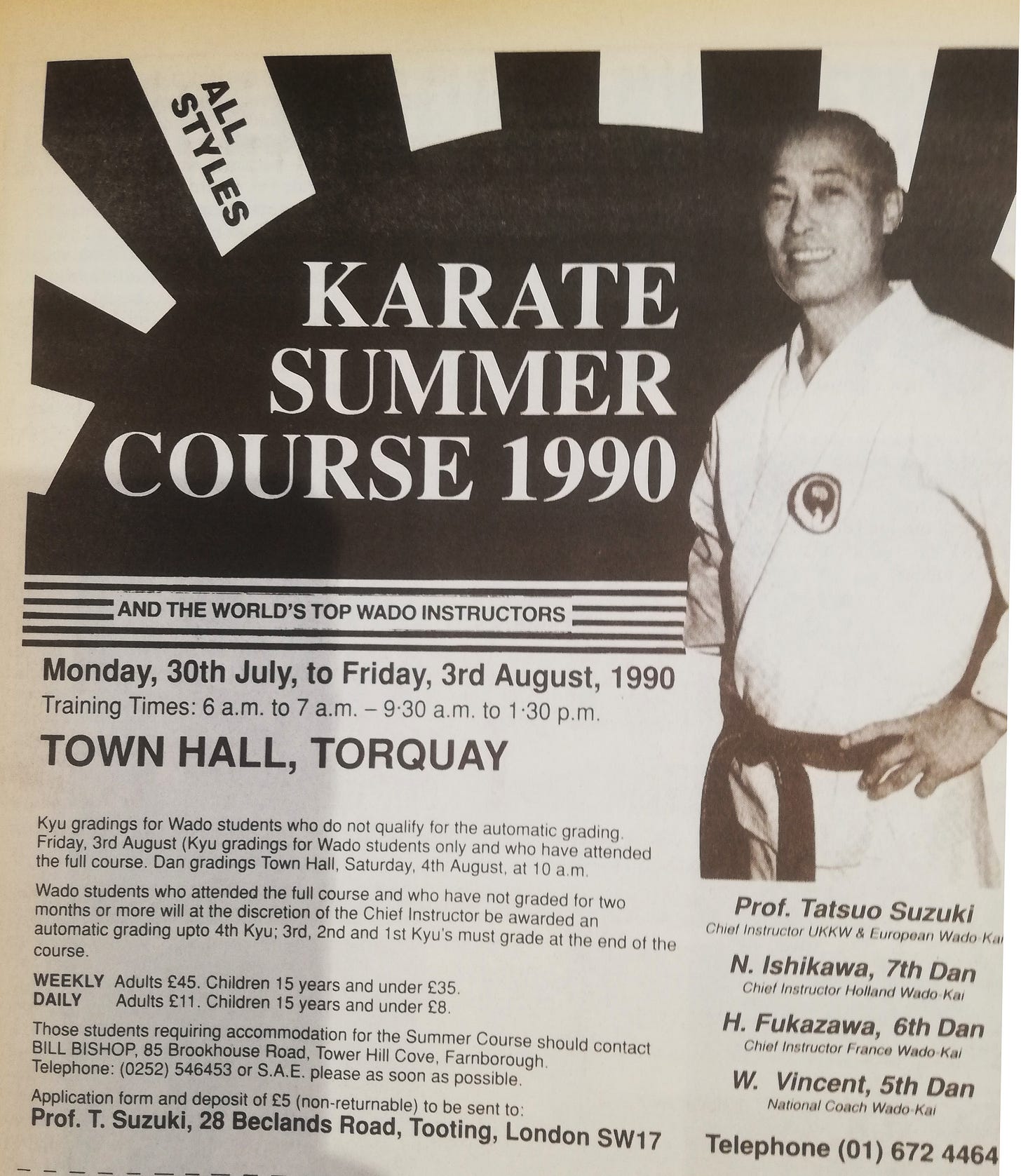In this chapter:
· Ads and promotion.
· The organisations and factions start to get their ducks in a row.
· Fukazawa Sensei.
· Sakagami Sensei’s ‘condensed’ summer course.
· Another brush with the law… well, sort of.
· Sakagami Sensei’s syllabus.
· Competitions.
[A note to subscribers: This post is one of the twice monthly in-depth pieces. Free subscribers see the first half and are then prompted to become a paid subscriber to read the rest. For free subscribers, your weekly posts come in every Tuesday as usual].
To set a little context.
In the opening years of the decade, here in the UK; John Major was the weak and struggling prime minister and successor to Margaret Thatcher. Britain was in a recession, Freddie Mercury died and Tim Berners-Lee introduced the WorldWideWeb to the whole planet. That last point is relevant to the continuing story because it has to be remembered that in the 1990’s the WWW was only in its earliest infancy, and as such we had none of the advantages we have now. Our communications in UK Wadoland were only slightly more advanced that what the Victorians had.
UK Wado karate - The story continues.
Things steadily consolidated. One of the first to get the full gears in motion was Sakagami Sensei with his Aiwakai. He had his committee, his syllabus, his squad coaches all up and running really quickly.
Magazine ads started to appear; my journal tells me that in 1990 UK publication ‘Traditional Karate’ ran a page that advertised the Wado Academy, on which was listed the highest graded instructors and a whole bunch of senior Dan grades I had never heard of; mostly 4th Dans. Amongst ourselves we asked the question, ‘who were they?’ They weren’t names we were familiar with.
According to the ad these were mostly Takamizawa Sensei’s people (TIOK), but not exclusively; note the name of Eugene Codrington who was one of the outstanding stars of international competition karate in the 1970’s, although he is not listed as TIOK, he did begin his career with Takamizawa Sensei. I do recall seeing him once or twice at Academy courses. But there are other names on there I never actually saw on any of the major Academy courses.
One of the first ads put out by the Academy. Note the inclusion of a broad affiliation of karate political groups. [courtesy of Traditional Karate].
Takamizawa Sensei had a long-established group of seniors who worked their way up inside his organisation. As I understood it, the people who made it on to the list in the above ad were his highest graded key people at the time. They were a tight knit group who adhered to their Sensei’s progressive ideas and added a different flavour through their interpretation of Wado. Their presence certainly boosted the numbers on the larger courses. When I got to know them later on, they were actually a likable and sociable group of dedicated people.
Meanwhile, Suzuki Sensei had also been busy. To make a clear statement about his distance from both the Renmei and the Wado Kai he had a new logo designed; the same dove with circling wings, but in the centre a red circle synonymous with the Japanese flag.
Suzuki Sensei also ran full-page ads in the magazines. Carefully worded to underline the credentials of the UKKW as Suzuki Sensei’s legacy. Also listing his senior people.
Image courtesy of Traditional Karate magazine. Take note of the instructor lineup.
Reports from the larger Suzuki courses featured pictures of Suzuki standing with guest Japanese instructors; from the Netherlands, Ishikawa Sensei and from France, Fukazawa Sensei.
I had met Fukazawa Sensei before on one of the UKKW Summer courses in Torquay. I remember partnering him. He was quiet and polite and when we came down to training in Suzuki Sensei’s Ohyo Gumite drills he admitted to me that he didn’t know them and so we worked through them steadily so he could get a grasp on these paired kata. His original karate training and his reason for coming to Europe was to promote Mochizuki Sensei’s Yoseikan karate, so he was a late convert to Wado. (Fukazawa Sensei died in Paris in 2010).
What Suzuki Sensei’s thinking was at the time I have no idea; maybe he was just lining up his allies?
Training with Sakagami Sensei in the East Midlands.
In June or July 1990 Sakagami Sensei and his Aiwakai organisation were running what he called a ‘condensed summer course’ not far from Nottingham (probably Belper area). For some reason I was without a vehicle and Steve Chamberlain from Hertford said we could travel together in his car. It all worked out really well because at that time I had a house in Nottingham, a kind of bolthole to escape the demands of the boarding school. So we had somewhere to sleep for the weekend.
When they said ‘condensed’ they really meant it. Sakagami Sensei made sure that it was pretty intensive and very physical. I have an abiding memory of returning to the changing room on the first day, after training outdoors and being abruptly struck with the most sudden and crippling hamstring cramp, so intense that I just collapsed to the floor. A guy who I didn’t know, just grabbed me and went straight to work on the afflicted muscle until it released me from its grip. The kindness of strangers, eh?
I have never been a fan of training outdoors. We sometimes did it on the Suzuki summer courses and I think the instructors assume they are doing you some kind of favour; but give me a well-ventilated Dojo and a sprung floor and I am as happy as can be. Blistering sun, grass divots and other unmentionable and unhygienic hazards are not my idea of fun – you can keep your en plein air experiences.
Steve Chamberlain is a lovely guy, but he’s such a Southerner.
Once we had arrived in the Midlands we stopped at a café for coffee and food. When the waitress tried to describe to us what was on the menu and referred to us with that very East Midland endearment, ‘Duck’ or ‘Duckie’ Steve was nonplussed; he looked at me and said one word, “translation?” But things got weirder over the weekend.
After training on the Saturday, we were so depleted of fluids that a local pub seemed to be the best place to top-up (naturally). We found a typical roadside Inn, nothing special, nothing posh (in those days these places seldom offered food, and ‘fine dining’ didn’t seem to happen in Nottinghamshire).
As we walked into the main bar, we saw a large table with about fifteen men sat at it, each with a pint glass in their meaty fists, and there in the middle of them all was one very attractive young woman.
The first odd thing I noticed about her was she was wearing a female police officer’s hat; the second thing was that the hat was the ONLY THING she was wearing.
Confused looks from both Steve and myself, until the penny dropped. We had walked in on the aftermath of a strippergram performance. No doubt the (mock) lady police officer had asked the birthday-boy if she could ‘take down his particulars’.
“Is this normal?” said Mr Chamberlain. There is no such thing as ‘normal’ in the East Midlands.
Fortunately, the rest of the weekend went off without such micro-dramas and we could just concentrated on surviving another ‘condensed’ day of training.
A word about the Aiwakai syllabus.
[To read the remaining half of this article, become a paid subscriber. If you can read beyond this point, that means you are already part of the premier membership, and I thank you for your sponsorship and support of quality journalism].







